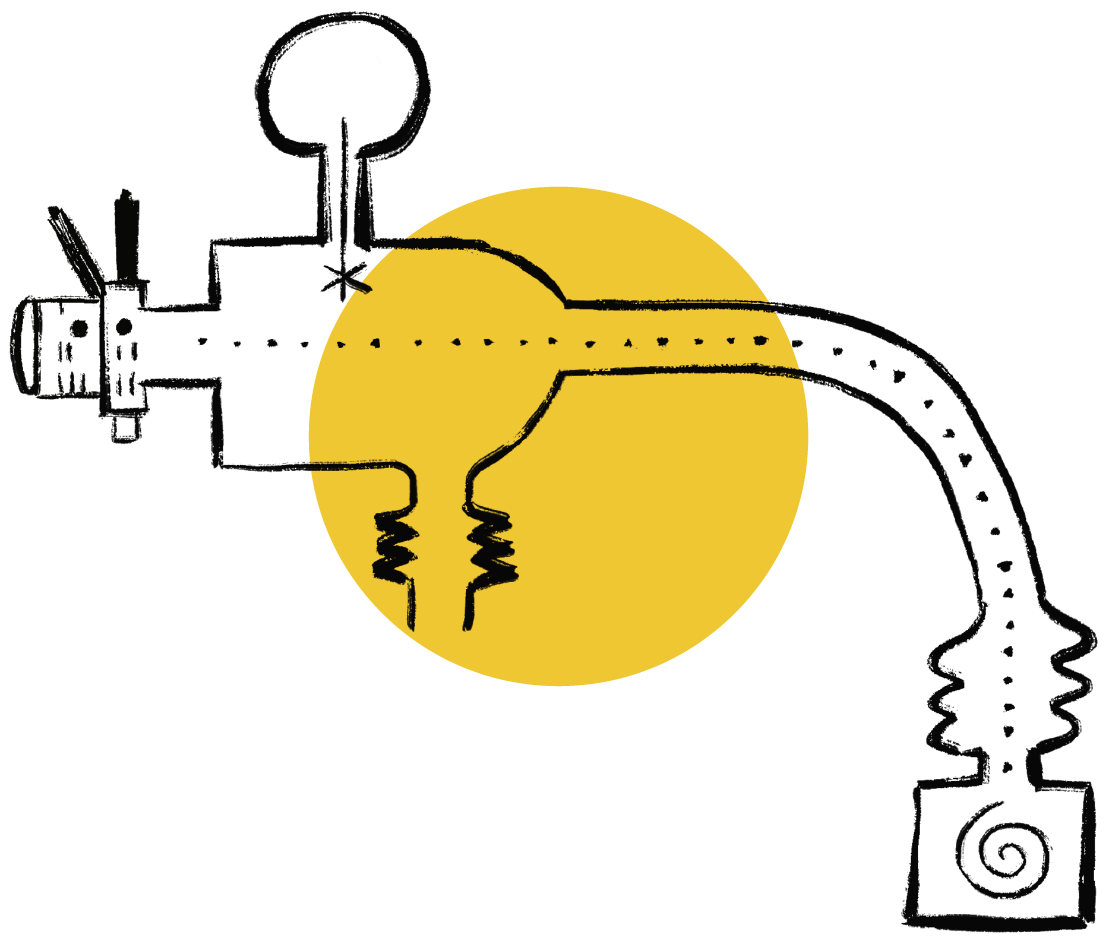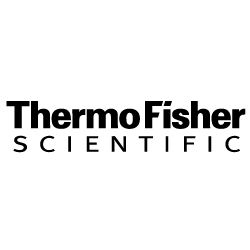Excedr’s leasing program is brand agnostic. Pick from the manufacturer of your choice. Request a lease estimate and see how leasing can save you time and money.

Scientists and researchers use mass spectrometry (MS) as an analytical tool to determine the relative abundance of isotopes, identify unknown compounds, quantify known components, and elucidate structures found in both pure samples and complex mixtures.

Not to be confused with mass spectroscopy—the term’s use is discouraged due to the possibility of confusion with light spectroscopy—MS measures the distribution of ions by mass, or mass-to-charge ratio (m/z), of molecules (and/or its fragments) and atoms by ionizing the atoms and molecules with a high-energy electron beam and then deflecting the ions through a magnetic field based on their mass-to-charge ratios (m/z). These measurements can often be used to calculate the molecular weight of the sample.
A mass spectrometer—the device that utilizes MS—consists of an ion source, a mass analyzer, and a detector. Typically, as a sample is introduced into the spectrometer, it is bombarded with electrons and ionized, allowing the compounds to become charged and fragmented.
Using the mass analyzer, the ions are separated by an electromagnetic field according to their mass-to-charge ratio (m/z). The detector system then ascertains the relative abundance of each of the resolved ionic species.
The spectrometer will then create a graphical representation of the ion’s specific ion abundance vs. m/z that were separated during analysis. This plotting is referred to as the mass spectrum. It can represent many different types of information based on the type of mass spectrometer and the specific experiment applied. These spectra are used to determine the elemental or isotopic signature of a sample, the masses of both particles and molecules, and to elucidate the chemical structure or identity of molecules and chemical compounds.
MS is used in a diverse range of fields that includes proteomics, metabolomics, forensic toxicology, as well as general clinical research. It has become a particularly powerful tool used in proteomics as well. Using the technique enables researchers to perform proteome-wide analysis and characterization of proteins from a wide range of cell types and organisms.

Mass spectrometer instrumentation is made up of three major components that each carry out the fundamental steps in the analytical process: ion generation, ion separation, and ion detection.
Ionization is used to produce gas phase ions suitable for resolution in the mass analyzer. In order for a mass spectrometer to ionize a sample, or analyte, under analysis, an ion source is required. This ion source is how a mass spectrometer system generates ions. Afterward, the ions are transported via magnetic or electric fields directly to the mass analyzer.
Ionization techniques have played a vital role in determining what types of samples can be analyzed using MS. Depending on what you are analyzing, you’ll have to use specific types of ionization. Electric and chemical ionization are used for both vapors and gas, while matrix-assisted laser desorption/ionization (MALDI) and electrospray ionization are used for solid or liquid biological samples.
There are two classifications of ionization used in MS.
The choice of ionization source is extremely important, and is usually classified as “hard” or “soft”.
Hard ionization fragments molecules, whereas soft offers little or no fragmentation. One example of hard ionization is electric ionization, or EI. This technique creates a high degree of fragmentation and yields in-depth mass spectra that can provide insightful, critical information. This type of ionizing tend to have lower m/z value compared to the molecular mass.
On the other hand, soft ionization includes processes such as chemical ionization (CI), electrospray ionization (ESI), and MALDI.
The mass analyzer is used for separating or resolving the ions according to their mass-to-charge ratio (m/z). This component is how the MS system separates ions.
There are six general types of analyzers used in MS:
Each type has its advantages and disadvantages. While some offer high resolution and dynamic range, they can be expensive and bulky. Others may offer high sensitivity and reproducibility but lack the scan speed you require.
No single analyzer is suited for all analyses, and the advantages or limitations can have a significant impact on your lab. Therefore, understanding the different principles, features, and characteristics of each type is essential to choosing the one that best suits your needs and provides you optimal capabilities.
A key element of any system, the spectrometer’s detector is used to detect separated ions and convert them into a measurable signal. The separated ions are measured, and those measurements are sent to a data systems that creates a mass spectrum, a graphical representation of each ion’s m/z ratios and their relative abundance, plotted against their intensities.
There are several types of detectors available. The type you use depends on a variety of factors that can include spatial information retention and dynamic range, as well as spectrometer design and application requirements. They include:
Many of the various types of detectors offer high sensitivity, as well as linear and quantitative response. However, some detectors are designed for very specific functions. Noise, uniformity, and counting single or multiple masses are also important considerations when choosing an instrument.
Ion detection technology has not received as much attention as the ion source and mass analyzer. Traditional analog (Faraday detectors)—and electron multiplier (EM) detectors have been used for decades, and although advances in ion detection technology have occurred, they have been incremental. Nonetheless, it is an area of importance, due to the fundamental need to detect ions.
A sample can be introduced into an MS system in several ways, depending on the experimental setup.
For many researchers and scientists in the life sciences, MS almost always means liquid-chromatography-mass spectrometry (LC-MS), gas chromatography-mass spectrometry (GC-MS), inductively coupled plasma-mass spectrometry (ICP-MS), as well as several other integrated analytical solutions.
Because mass spectrometers typically lack any analytical front end, integrating these systems with chromatographic technologies has become fundamental to analytical research. However, stand-alone devices can still be found in use for the analysis of pure solid and liquid compounds, or as chemical-specific analyzers that do not require separation from each other or the matrix they occur in.
Furthermore, tandem mass spectrometry, or MS/MS, is used to increase the overall ability of the two devices to analyze chemical samples. These coupled systems can be used alone as well, or together with GC or LC systems.
Mass spectrometry is used in a variety of applications across a wide range of fields. It’s applications commonly include:
Richard A. Yost and Christie G. Enke’s report on the triple quadrupole mass spectrometer in the Journal of the American Chemical Society in 1978 has been cited as the birth of mass spectrometer instruments.
However, the pair did not set out to create a mass spectrometer when they began to attempt entirely computerizing an analytical instrument. The triple quadrupole mass spectrometer, over 40 years old now, enabled scientists to use MS as an analytical chemistry technique. Before Enke and Yost’s work, MS was primarily used by organic and physical chemists. Since the pair’s report, the triple quadrupole mass spectrometer has turned into the workhorse of quantitative mass spectrometry.

Our lease agreements are founder-friendly and flexible, helping you preserve working capital, strengthen the cash flow of your business, and keep business credit lines open for expansions, staffing, and other crucial operational expenses and business development opportunities.
Leases range from 2 to 5 years. Length will depend on several factors, including how long you want to use the equipment, equipment type, and your company’s financial position. These are standard factors leasing companies consider and help us tailor a lease agreement to fit your needs.
We don’t carry an inventory. This means you’re not limited to a specific set of manufacturers. Instead, you can pick the equipment that aligns with your business goals and preferences. We’ll work with the manufacturer of your choice to get the equipment in your facility as quickly as possible.
Bundle preventive maintenance and repair coverage with your lease agreement. You can spread those payments over time. Easily maintain your equipment, minimize the chances something will break down, repair instrumentation quickly, and simplify your payment processes.
At the end of your lease, you have multiple options. You can either renew the lease at a significantly lower price, purchase the machine outright based on the fair market value of the original pricing, or call it a day and we’ll come the pick up the equipment for you free of charge.
Our leases do not include loan-like terms, which can be restrictive or harmful in certain situations. We do not require debt covenants, IP pledges, collateral, or equity participation. Our goal is to maximize your flexibility. When you lease with us, you’re collaborating with a true business partner.
Our underwriting is done in-house. You can expect quicker turnaround, allowing you respond to your equipment needs as they arise. We require less documentation than traditional lenders and financiers and can get the equipment you need in operation more quickly.





































































































